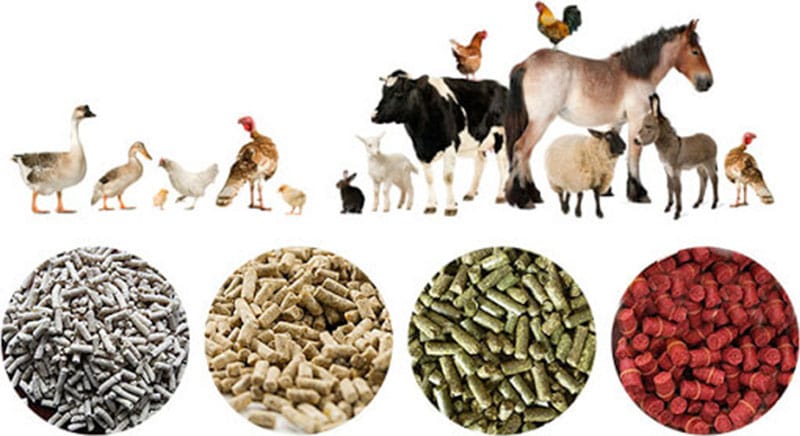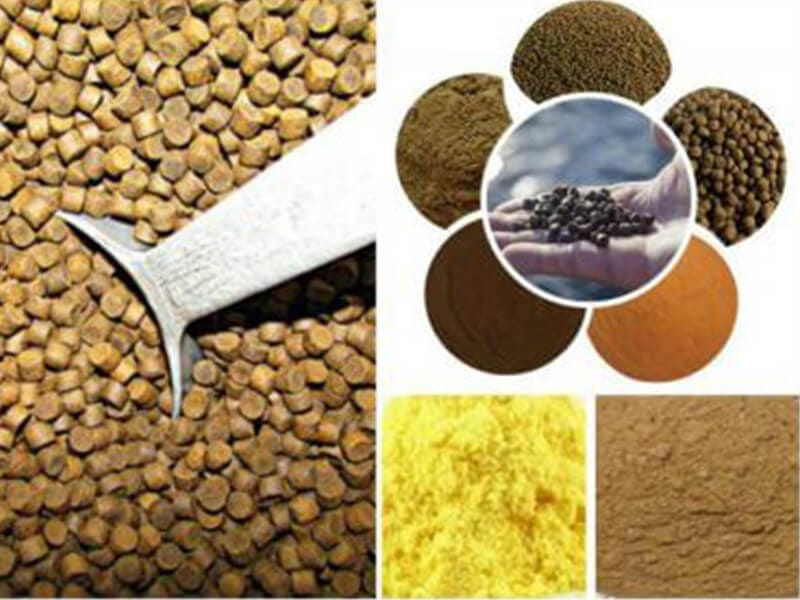Application of animal feed additives in South Africa
1. Current status of feed additives in South Africa
The livestock industry in South Africa is recovering from the effects of the recent devastating drought and outbreak. Due to the surge in demand for high-quality meat products from middle-class consumers, the South African livestock industry has a large gap in the market demand for feed additives.
South Africa prioritizes meat as the main source of protein. In 2016, the consumption level was increased to 3.8 million tons. The recovery of the poultry industry is expected to promote the performance of the feed additive market.
Although South Africa's demand for meat, eggs and milk has increased in the past few years, the 2015-2016 feed production has experienced negative growth due to the outbreak.
The Animal Feed Manufacturers Association (AFMA), the official representative body of the South African feed industry, stated that the sales volume of cattle feed, sheep feed and poultry feed was 6.9 million tons in 2015-2016, but fell to 6.5 million in 2016-2017 and 2017-2018. Tons and 6.4 million tons. However, compared with the sharp decline in sales of 6.2% in 2016, feed sales in 2017-2018 only showed a negative growth of 0.7%.
According to relevant data, the consumption of red meat in South Africa in 2016 increased from 22 kg per person in 2000 to 29 kg per person, while the per capita consumption of chicken meat increased from 22 kg per person in 2000 to 40 kg per person.

2. What is animal feed additive?
Feed additives refer to small or trace substances added in the process of animal feed production, processing and use. The amount of feed additives is small but the effect is significant. Feed additives are inevitable raw materials used in the modern feed industry. They have obvious effects on strengthening the nutritional value of basic feeds, improving animal production performance, ensuring animal health, saving feed costs, and improving the quality of livestock products.
3. Classification of feed additives
(1) Bile acid
Bile acid is the main active component of bile. In the hepatoenteric circulation, it combines with fatty acids to emulsify fat and form a fat-soluble complex with fatty acids, so that fatty acids can be absorbed through the membrane to complete digestion and absorption. It can improve the activity of endogenous emulsifiers, make up for the insufficient secretion of endogenous emulsifiers, and release the potential energy of feed. It can promote the digestion and absorption of fat, protect the liver and gallbladder, improve the health of livestock and poultry, and increase the utilization rate of feed.
(2) Acidifier
Including citric acid, fumaric acid, lactic acid, acetic acid, hydrochloric acid, phosphoric acid and compound acidifiers, etc. Adding a proper amount of acidifier to pig diets can significantly increase pig daily weight gain and reduce feeding costs.
(3) Calcium formate
As a feed additive, calcium formate is especially suitable for weaning piglets. It can affect the proliferation of intestinal microorganisms, activate pepsinogen, improve the energy utilization of natural metabolites, increase feed conversion rate, and prevent diarrhea and diarrhea. The addition amount is generally 1-1.5%.
(4) Sodium diacetate
Sodium diacetate is a stable feed anti-mold preservative, sour agent and improver. Appearance is white powder with acetic acid smell, easy to absorb moisture, and easy to dissolve in water. The use of sodium diacetate not only maintains the bactericidal properties of acetic acid, but also does not cause poor feed palatability due to excessive acidity. Therefore, SDA can prevent mold and spoilage of stored foods and beverages, and thus has the effect of preventing mold and keeping fresh.
(5) Promoting growth
Including olaquindox, pig growth, fast breeding sperm, hematogen, liver residue, livestock and poultry music, fat pig Wang, etc.
(6) Trace elements
Including copper, iron, zinc, cobalt, manganese, iodine, selenium, calcium, phosphorus, etc., it has the functions of regulating body metabolism, promoting growth and development, enhancing disease resistance and improving feed utilization. After adding, the daily weight gain of pigs can generally increase by 10%-20%, and the feed cost can be reduced by 8%-10%.
(7) Vitamins
Including vitamins A, D2, E, K3, B1, D3, B2, B6, C, as well as multiple vitamins, choline, pig premix additives, vitamin fat, health supplements, tonic factors, etc. Different breeds of pigs and different growth stages are selected scientifically.
(8) Amino acids
Including 18 kinds of amino acids such as lysine, methionine and glutamic acid, as well as Shengbao, Poultry and Livestock, Feed Yeast, Feather Meal, Earthworm Powder, Feeding Le, etc. The most used additives are lysine and methionine , Adding 0.2% lysine to the diet to feed pigs can increase daily weight gain by about 10%.
(9) Antibiotics
Gold toxin, salinomycin, tetracycline, bacteriocin, lincomycin, Kangtai feed additives and Zhubao, Baoshengsu, etc.
(10) Deworming health care
Including Anbao ball net, Ke ball powder, etc.
(11) Anti-mold
As rice bran, fish meal and other concentrated feeds contain high fat content, they are prone to oxidative deterioration after long storage. Adding ethoxyquin, etc. can prevent feed oxidation, and adding propionic acid, sodium propionate, etc. can prevent feed mildew. Adding cinnamon powder not only has a strong bactericidal effect, but also has the effects of scent inducing food, medical care, and growth-promoting light.
(12) Chinese herbal medicine
Including garlic, mugwort pine needle powder, glauber's salt, codonopsis leaves, medical stone, wild hawthorn, motherwort, etc.
(13) Buffer feed
Including sodium bicarbonate, calcium carbonate, magnesium oxide, calcium phosphate, etc.
(14) Seasoning
Including sodium glutamate, edible sodium chloride, lactose, maltose, hay, etc.
(15) Hormones
Including growth factor, fattening spirit, etc.

4. The main application of feed additives in South Africa
(1) Chicken
The digestive tract of chickens is relatively short, and the intestinal mucosal barrier is weak. Under intensive breeding conditions, compared with animals with long digestive tracts, they are more susceptible to harmful microorganisms, leading to various diseases. The use of feed additives is one of the effective means to prevent and treat intestinal diseases and improve the performance of broilers and layers. The growth rate of broilers is fast, and the intensive production is greatly affected by the environment. The application of feed additives can improve the balance of intestinal flora, reduce the incidence and mortality of intestinal diseases, increase slaughter weight, reduce feed and meat ratio, and reduce Emissions of harmful gases such as ammonia and hydrogen sulfide in the chicken house improve product quality. The application of feed additives in layer breeding can not only prevent diseases, improve production performance and feed remuneration, but also improve egg quality. Studies have shown that adding feed additives to the diet of laying hens can increase the Hastelloy unit of the eggs, reduce the cholesterol content of the eggs, and have the effects of improving the thickness of the egg shell and reducing the soft-shell eggs.
(2) Pig
Current research and application show that feed additives have achieved good application effects in the breeding of piglets, sows and fattening pigs. Adding feed additives to piglet diets can promote piglet intestinal development, improve intestinal health, reduce diarrhea rate, and increase piglet growth rate and feed conversion rate. For lactating piglets, adding feed additives helps to establish a dominant flora of probiotics; for weaned piglets, it can improve the adverse effects of diarrhea and growth retardation caused by factors such as the secretion of digestive enzymes and the antigenicity of the diet.
Studies have shown that the use of feed additives in sows' diets can improve intestinal health and improve sows' immunity and reproductive performance. After adding feed additives, it can improve the ability to adjust the balance of the flora in the gastrointestinal tract, increase the sow’s feed intake during lactation, inhibit weight loss, increase the fat and protein content in the sow’s milk, and improve the survival rate of weaned piglets and weaned piglets body weight. Adding feed additives to the fattening pig diet can increase feed intake and feed conversion rate, improve health, shorten the fattening period, and have the effect of improving quality and reducing environmental pollution. Studies have shown that adding feed additives can reduce the diarrhea rate of fattening pigs, improve immunity, increase feed intake and feed digestibility, thereby increasing the utilization rate of rations and reducing the feed-to-meat ratio. In addition, feed additives have a certain promoting effect on increasing intramuscular fat and increasing the content of essential fatty acids, which can improve the quality of pork.
(3) Ruminants such as cattle and sheep
Studies have shown that feed additives can improve the weight gain rate of meat ruminants such as mutton sheep and beef cattle, increase the carcass net meat rate, and improve meat quality. For milk-producing ruminants, feed additives can increase milk production, prolong the peak of milk production, increase milk fat rate, reduce the number of somatic cells in milk, and improve milk composition. It also plays a role in preventing and treating mastitis and reproductive diseases. For calves whose digestive tract is not well developed, the use of additives can promote the establishment of the calf's gastrointestinal flora, adjust the balance of the flora, and reduce the occurrence of calf diarrhea. In addition, the use of feed additives can promote the weight gain of calves.
(4) Aquatic products
The application of feed additives in aquatic feed products is reflected in two aspects: bait and water purification. Feed additives can improve the micro-ecological balance of aquatic animals, promote growth and development, play a role in preventing and controlling diseases and improving production performance. Probiotics can be colonized in fish intestines to promote the growth and development of fish and improve disease resistance. Feed additives for feed can reduce the incidence of prawns and increase survival rate and yield. Feed additives can be used as immunostimulants and adjuvants for aquatic animals to promote the development of immune organs, improve the level of humoral immunity, and improve immune function. This effect has been verified in a variety of aquatic animals. The photosynthetic bacteria and nitrifying bacteria in feed additives can consume organic matter in the water body, remove ammonia nitrogen, hydrogen sulfide, nitrite nitrogen, etc., are important beneficial microorganisms currently applied to improve the aquaculture environment. Good application effect is obtained in breeding.
5. Matters needing attention in the production and use of feed additives
(1) Abuse of antibiotics and hormones in feed additives In the early production of feed additives, some people used low-dose antibiotics or sulfa drugs to prevent diseases or diarrhea in livestock and poultry. This low-dose antibiotic will destroy the ecological balance between microorganisms (including pathogenic microorganisms) in the natural environment, and residues in food will seriously affect human disease treatment and human inheritance.
(2) The amount of certain trace elements is too much or insufficient. The trace elements commonly used in feed additives include iron, copper, manganese, zinc, iodine, selenium, etc. These elements enter the human body as ions, molecules or Compounds with complex structures exist in different states, and their biochemical effects are different in different states. Too little will cause deficiency, and too much will cause poisoning or imbalance. Therefore, the content must be appropriate and the mixing is uniform, otherwise it will have the opposite effect.
(3) Exaggerating the effect of feed additives, the effect of feed additives on balancing the diet and promoting the production and growth of livestock and poultry is affirmative. Generally, it can increase production by 5%-25% compared with the control group without additives. However, some products over-exaggerate their role in advertising. We should be vigilant against these unrealistic publicity.
If you want to built one complete pellet production line in your country, pls send the inquiry to us. We will customized design according to your requirement.



